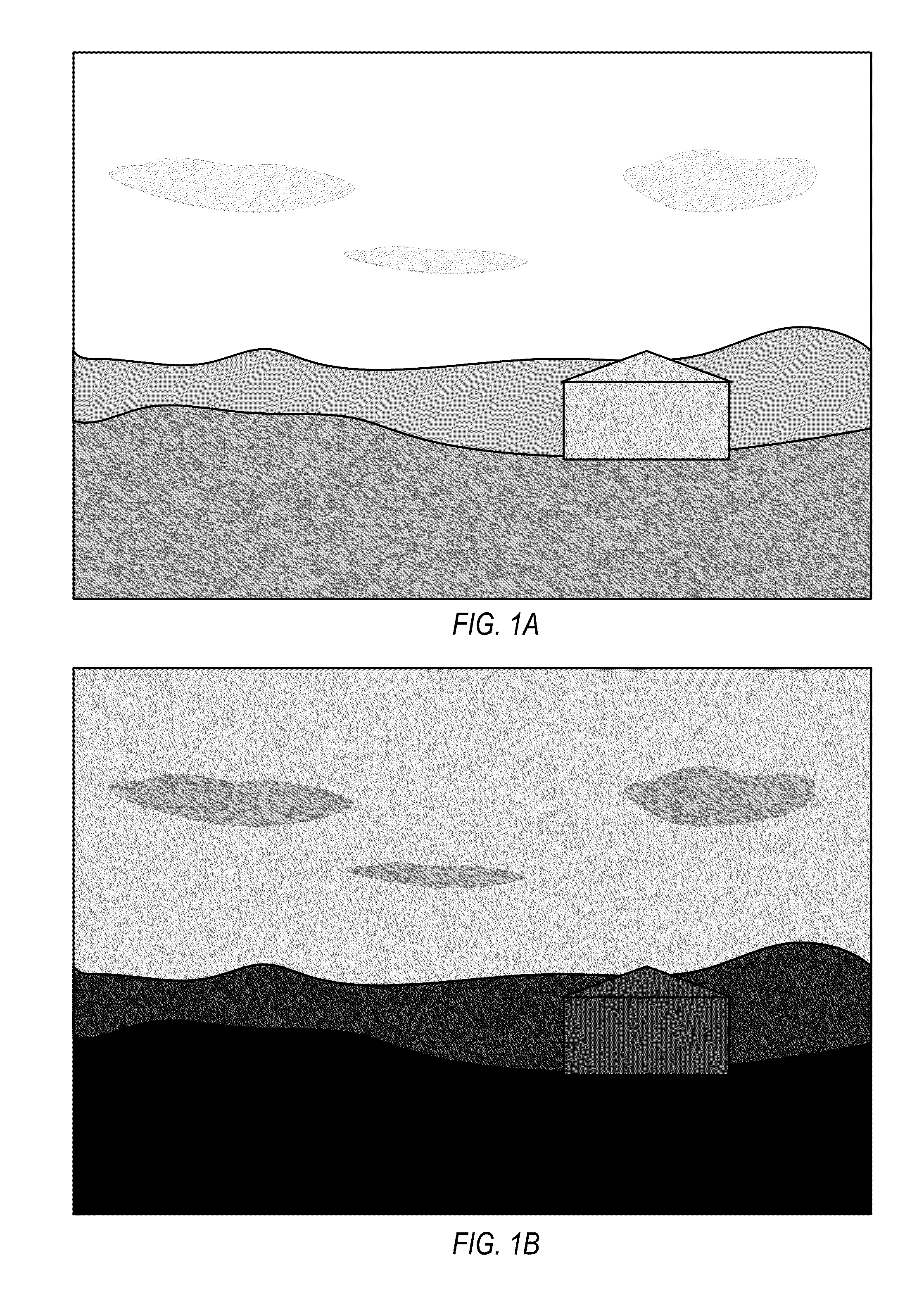Methods and Apparatus for Blending Images
a technology of blending and images, applied in the field of methods and apparatus for blending images, can solve the problems of complex darkroom techniques, difficult to capture in a single exposure, and combining multiple negatives to produce a single prin
- Summary
- Abstract
- Description
- Claims
- Application Information
AI Technical Summary
Benefits of technology
Problems solved by technology
Method used
Image
Examples
example implementations
[0088]FIG. 14 illustrates an example image blending module 920 that may implement image blending methods and workflows as illustrated in FIGS. 1A through 13. Embodiments of an image blending module 920 may, for example, be implemented as a stand-alone image processing application, as a module of an image processing application, as a plug-in for applications including image processing applications, and / or as a library function or functions that may be called by other applications. Embodiments of image blending module 920 may be implemented in any image processing application, including but not limited to Adobe® PhotoShop® Adobe® PhotoShop® Elements®, and Adobe® After Effects®. FIG. 15 illustrates an example computer system on which embodiments of image blending module 920 may be implemented.
[0089]Image blending module 920 receives as input a set of two or more digital images 910. An example set of input images is shown in FIG. 10A. Image blending module 920 facilitates workflows and ...
PUM
 Login to View More
Login to View More Abstract
Description
Claims
Application Information
 Login to View More
Login to View More - R&D
- Intellectual Property
- Life Sciences
- Materials
- Tech Scout
- Unparalleled Data Quality
- Higher Quality Content
- 60% Fewer Hallucinations
Browse by: Latest US Patents, China's latest patents, Technical Efficacy Thesaurus, Application Domain, Technology Topic, Popular Technical Reports.
© 2025 PatSnap. All rights reserved.Legal|Privacy policy|Modern Slavery Act Transparency Statement|Sitemap|About US| Contact US: help@patsnap.com



